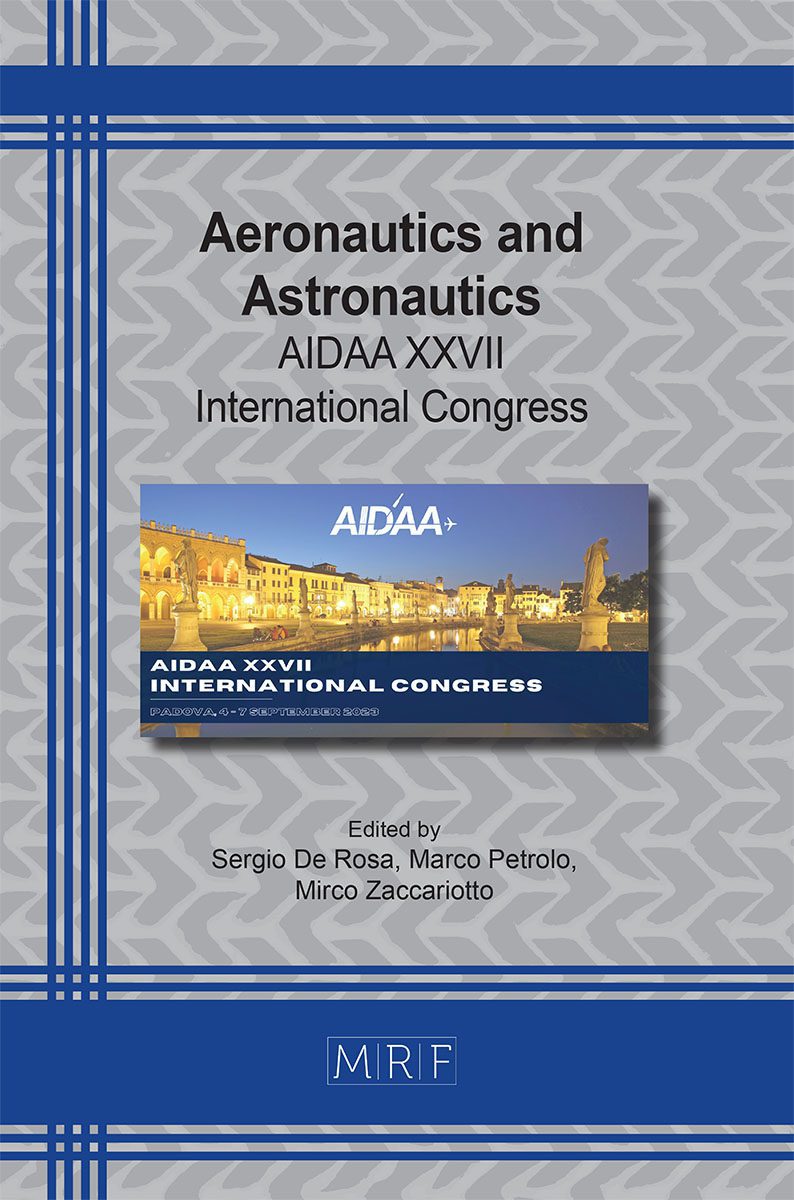Virtual testing application to ESA micro vibrations measurement system
Lorenzo Dozio, Leonardo Peri, Michele Pagano, Pietro Nali
download PDFAbstract. The challenging application of Virtual Testing (VT) to ESA’s six-degree-of-freedom Micro Vibrations Measurement System (MVMS) is described in this work. The digital replicate of MVMS is first obtained from a high-fidelity finite element model, whose order is later appropriately reduced. A state-space model representative of the dynamic behaviour of the MVMS is finally obtained. MVMS VT simulations are thus exploited as a key enabling technology to perform the ad-hoc design of MVMS control system design. This work focuses on different model-order reduction techniques applied to MVMS, which were evaluated and compared in terms of performance and computational issues. Classical and more recent approaches belonging to the family of Component Mode Synthesis (CMS) methods are addressed. State-space based techniques are considered as well, also in two-stage combination with CMS methods. Challenges and advantages of VT are lastly discussed.
Keywords
Virtual Testing, Microvibrations, MOR Techniques, Enhanced Craig-Bampton, Balanced Truncation
Published online 11/1/2023, 4 pages
Copyright © 2023 by the author(s)
Published under license by Materials Research Forum LLC., Millersville PA, USA
Citation: Lorenzo Dozio, Leonardo Peri, Michele Pagano, Pietro Nali, Virtual testing application to ESA micro vibrations measurement system, Materials Research Proceedings, Vol. 37, pp 235-238, 2023
DOI: https://doi.org/10.21741/9781644902813-51
The article was published as article 51 of the book Aeronautics and Astronautics
![]() Content from this work may be used under the terms of the Creative Commons Attribution 3.0 license. Any further distribution of this work must maintain attribution to the author(s) and the title of the work, journal citation and DOI.
Content from this work may be used under the terms of the Creative Commons Attribution 3.0 license. Any further distribution of this work must maintain attribution to the author(s) and the title of the work, journal citation and DOI.
References
[1] Statement of Work ESA Express Procurement – EXPRO SOW 6DOF MVMS Simulation Model, SA-TEC-MXE-MECH-SOW-00147.
[2] P. Nali, et al., A virtual shaker testing experience: modeling, computational methodology and preliminary results, ECSSMET 2016 (European Conference on Spacecraft Structures, Materials & Environmental Testing), Toulouse, France, 27-30 September 2016.
[3] B. Besselink, et al., A comparison of model reduction techniques from structural dynamics, numerical mathematics and systems and control, J Sound Vib., 332 (2013), 4403–4422. https://doi.org/10.1016/j.jsv.2013.03.025
[4] R.R. Craig, M.C.C. Bampton, Coupling of Substructures for Dynamic Analyses, AIAA Journal, 6 (1968), 1313–1319. https://doi.org/10.2514/3.4741
[5] S. Rubin, Improved Component-Mode Representation for Structural Dynamic Analysis, AIAA Journal, 13 (1975), 995–1006. https://doi.org/10.2514/3.60497
[6] J. Kim and P. Lee. An enhanced Craig–Bampton method, International Journal for Numerical Methods in Engineering, 103 (2015), 79–93. https://doi.org/10.1002/nme.4880
[7] D. Kammer, M. Triller, Selection of component modes for Craig-Bampton substructure representations, ASME J Vib. Acoust., 118 (1996), 264–270. https://doi.org/10.1115/1.2889657
[8] A. Antoulas. Approximation of Large-Scale Dynamical Systems, SIAM, Philadelphia, USA, 1 edition, 2005. ISBN 978-0-89871-529-3.
[9] J. Spanos and W. Tsuha. Selection of Component Modes for Flexible Multibody Simulation, J Sound Vib., 14 (1991), 278–286. https://doi.org/10.2514/3.20638































